
views
Cleaning Up Fresh Stains
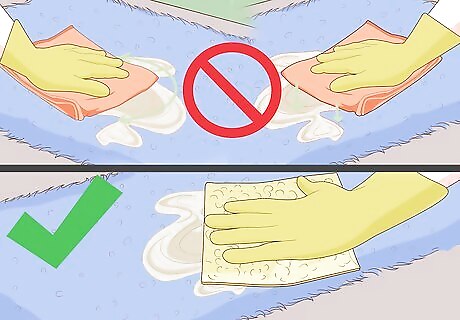
Blot up any excess urine immediately. As soon as you find a fresh urine stain, use a clean cloth to soak up as much excess urine as you can. If it’s on a carpet, mattress, or upholstered furniture item, gently blot the stain instead of rubbing or pressing hard, since this can force the urine deeper into the fabric or cushion. If the pee is on a hard floor, you can simply mop or towel it up. A wet/dry vacuum is also a great option for getting up the excess urine without forcing it deeper into your carpet or furniture.
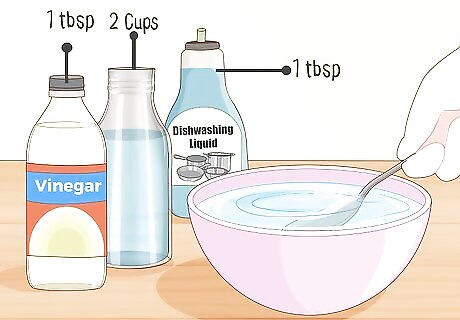
Make a solution of dishwashing liquid, cold water, and vinegar. Once you’ve blotted up the urine, mix 1 tablespoon (15 mL) of dishwashing liquid, 2 cups (470 mL) of cold water, and 1 tablespoon (15 mL) of vinegar together in a small bowl and stir to combine them. The vinegar will help break down the uric acid that contributes to the urine smell.Warning: Some animal behavior experts recommend against using vinegar, ammonia, or any other strong-smelling chemical cleaner on urine stains left by pets. The stronger odor combined with the remnants of their urine smell may simply encourage them to use the area again. Instead, stick to a high-quality enzymatic cleaner. If you’re washing a carpet, try using a commercial enzyme cleaner instead. Look for a cleaner designed to eliminate urine or pet odors.

Dip a microfiber cloth in the solution and gently sponge the area. Start at the center of the stain and slowly work your way toward the middle. Be careful not to press too hard, so that you don’t force the urine and cleanser deep into the fabric. If you can still see or smell the urine, go over the stain again. Try testing the cleanser in an inconspicuous spot before using it on the stain. If it stains or damages the surface you’re trying to clean, you may need to call in a professional cleaner. If you’re using an enzyme cleaner, simply spray it onto the stain and the surrounding area, then let it sit until it is completely dry.

Use a damp cloth to rinse out the solution. Get a clean, soft cloth and dip it in clean water. Wring out the excess water and gently dab the area until you get up all the cleanser. If you used an enzyme cleaner and let it dry, vacuum it out of your upholstery or carpet instead of rinsing it.
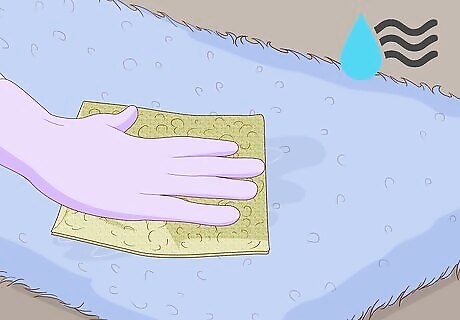
Pat the area dry with a microfiber cloth. After rinsing out as much of the solution as you can, take a clean microfiber cloth or towel and gently dab the area to soak up any remaining dampness. You can also use a wet/dry vacuum to try to remove excess moisture. If you still see or smell the stain after cleaning and drying the area, you may need to repeat the process or contact a professional cleaner.
Treating Old Stains and Odors

Mix baking soda, 3% hydrogen peroxide, and dish detergent. Combine 3 tablespoons (43 g) of baking soda, 10 fluid ounces (300 mL) of hydrogen peroxide, and 3 drops of dish detergent together in a bowl and mix them until the baking soda is dissolved. Then, pour the solution into a spray bottle. Hydrogen peroxide and baking soda are both good odor neutralizers, and hydrogen peroxide will also help eliminate visible stains. You can use this solution on hardwood flooring or upholstery, but be aware that it may cause discoloration. For carpets, use a commercial oxygen-activated enzyme cleaner instead.

Spot-test your cleanser in an inconspicuous area. Since hydrogen peroxide can discolor or bleach many surfaces, it’s important to test it out before using it. Find a small, inconspicuous area (such as a spot on the back of the couch) and spray a little of the solution on. Let it sit until it dries, then check for discoloration.Tip: If you’re cleaning a hardwood floor, you can sand and refinish the area to treat any resulting discoloration. If you see a stain or discoloration, you may need to have the surface cleaned professionally.
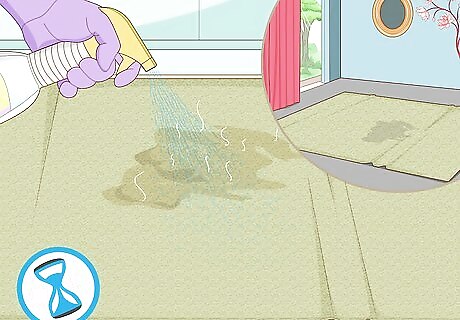
Spray the cleanser on the stain and let it sit for an hour. If you’re not concerned about discoloration, generously spray the stained area with the solution. After allowing the cleanser to sit on the stain for a full hour, come back and check if you can still see or smell any obvious urine. If so, spray the area again and wait another hour. If you’re using an enzyme cleaner, let it sit until it dries.
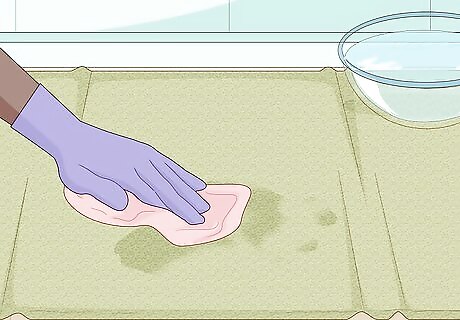
Rinse away the cleanser by dabbing the area with a damp cloth. Once the cleanser has had time to work, take a clean cloth and dip it in plain water. Wring out any excess water and blot the area until you get up all the cleanser residue. It’s important to clean up as much of the cleansing solution as possible, since the hydrogen peroxide could continue to damage the surface over time if you let it sit. If you used an enzyme cleaner, vacuum it out once it’s dry. There’s no need to rinse it.
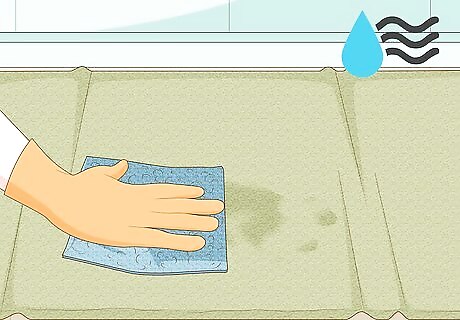
Pat the area dry with a clean microfiber towel. After rinsing out the stain, take a clean microfiber cloth or towel and gently dab the area until you soak up as much water as possible. You can also try to get out the excess moisture with a wet/dry vacuum. If the stain is still there, you may need to repeat the process or have the surface professionally cleaned.
Laundering Urine-Stained Fabrics

Put freshly stained items through a full wash cycle with vinegar. If urine has gotten onto something washable, such as a bedsheet or some clothing, put the item in the washing machine immediately. Add 1 cup (240 mL) of white vinegar to the wash, and wash the item for a full cycle using cold water.Alternative: Mix a 1 lb (0.45 kg) box of baking soda with the amount of detergent you would normally use to wash your clothes, and add that to the wash.
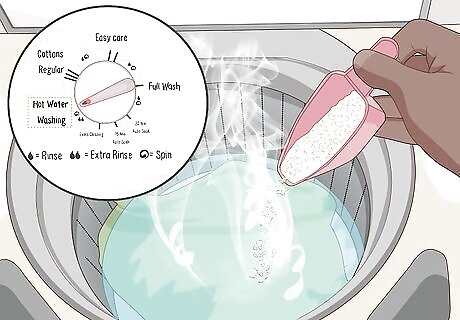
Repeat the wash cycle a second time with detergent. Once you’ve washed the item with vinegar, put it through the wash again as you normally would, using your regular detergent. This time, use the hottest water setting that you safely can with the fabric in question. If you can still see or smell the urine after washing the item a second time, try adding an enzymatic cleaner to the wash. There are a variety of enzyme-based laundry detergents, pre-soaks, and stain removers on the market.
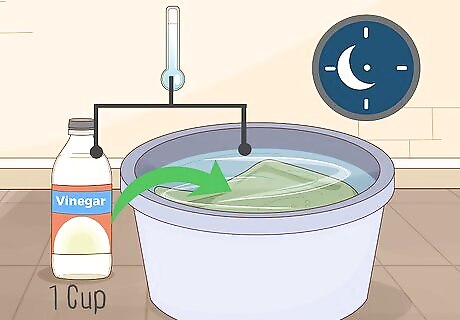
Soak set-in stains in vinegar and water overnight. If the stain has been sitting on the fabric for a long time, you may need to do some extra work to get it out. Try placing the item in a sink or tub filled with cold water and 1 cup (240 mL) of cold vinegar and allowing it to soak overnight. In the morning, wash the item with detergent as you normally would. Repeat this process as many times as necessary to get the stain or odor out.













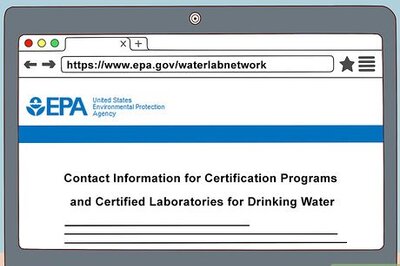






Comments
0 comment